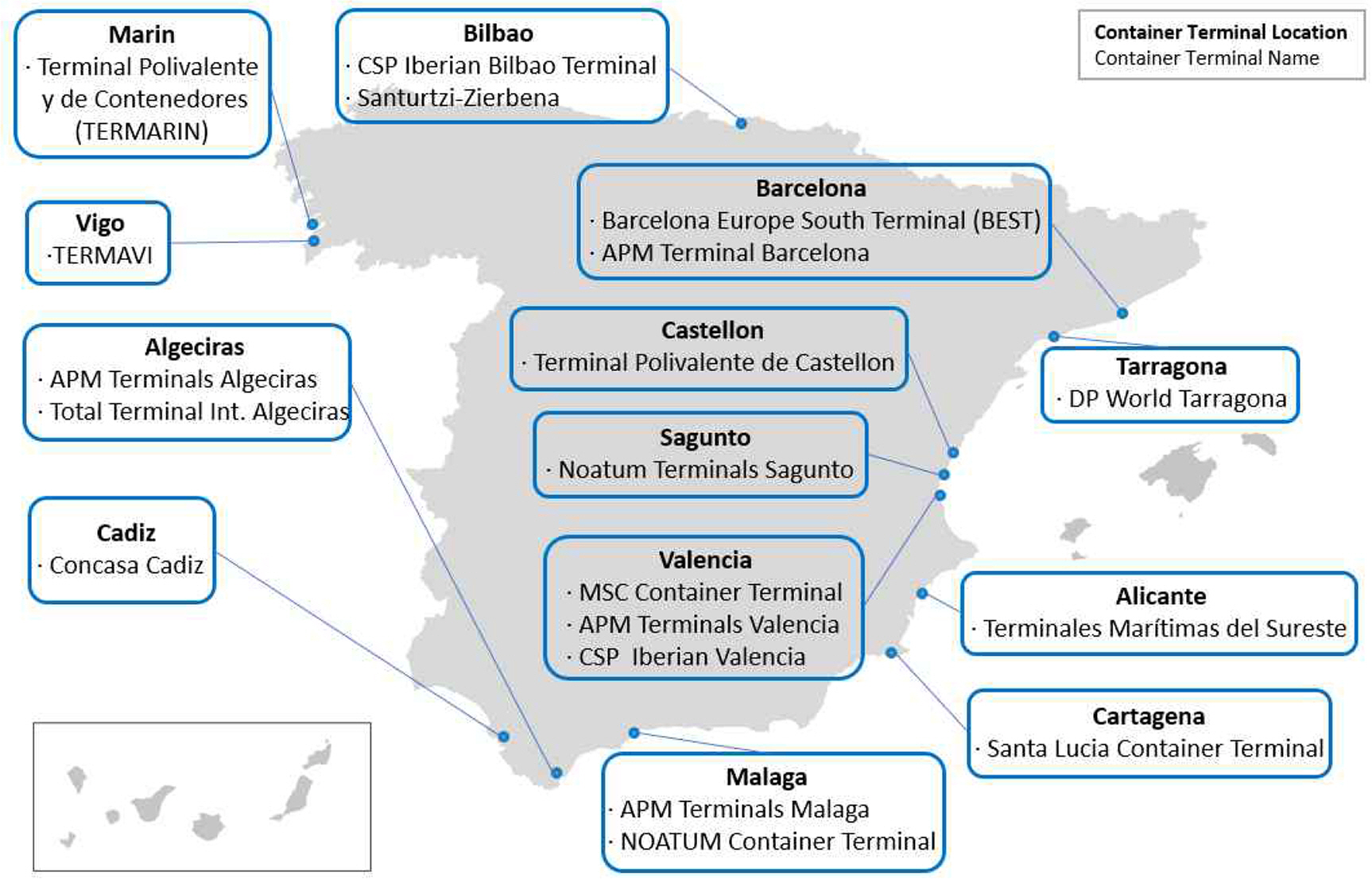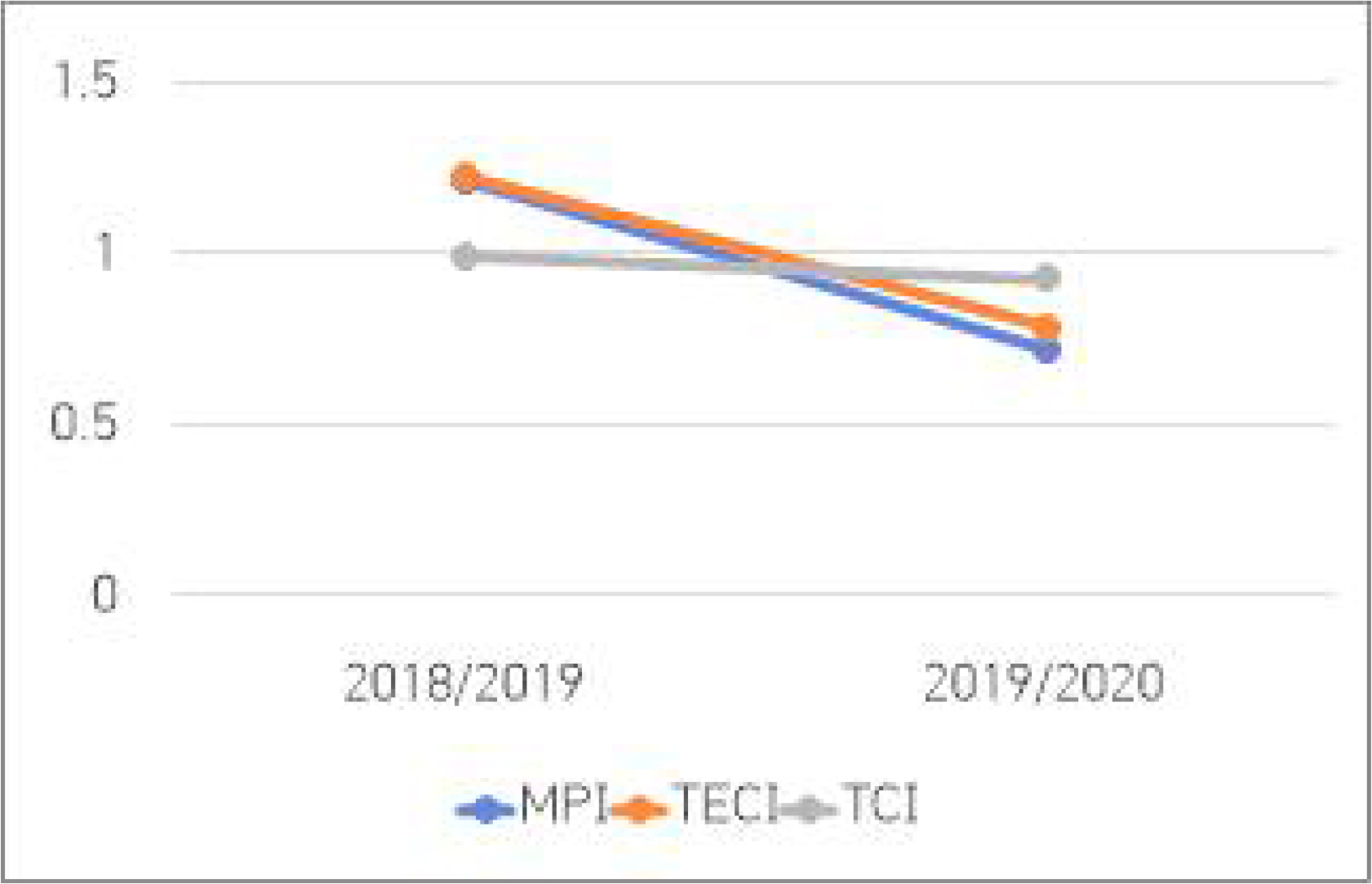 |
 |
| J Navig Port Res > Volume 46(2); 2022 > Article |
|
ABSTRACT
Acknowledgments
Table 1.
| Author | DEA Model | DMU Sample |
|---|---|---|
| Martinez-Budria et al. (1999) | DEA-BCC | 26 Spanish Ports |
| Medal-Bartual and Sala-Garrido (2011) | DEA with tolerances | 28 Spanish Ports |
| Shin et al. (2013) | DEA-BCC undesirable output | 8 Container Terminals at Busan and Kwangyang Ports |
| Gil Ropero et al. (2018) | Linear Regression Multiple, DEA-BCC | 13 Spanish Ports and 3 Portuguese Ports |
| Gökçek and Senol (2018) |
DEA-CCR DEA-BCC |
14 Mediterranean Ports (28 Container Terminal) |
| Gil Ropero et al. (2019) |
DEA-CCR DEA-BCC DEA Bootstrapping Scale Efficiency |
13 Spanish Container Ports and 3 Portuguese Container Port |
| Nguyen et al. (2019) |
DEA-CCR DEA-BCC. MI |
26 Vietnamese Container Terminals |
| Parra Santiago et al. (2020) | DEA Bootstrapping | 46 Spanish port authorities |
| Jung et al. (2020) |
DEA-SBM Undesirable Output |
5 Korean International Ports |
| Nguyen et al. (2021) |
DEA Slack-based measure MI Undesirable Output |
10 Vietnamese Container Terminals |
| Zhang (2021) | MI | 10 Container Terminals in Dali, China |
| Iyer and Nanyam (2021) |
DEA-CCR DEA-BCC MI |
26 container terminals in India |
| Nga et al. (2021) |
DEA Window Analysis DEA-CCR DEA-BCC Super SBM Efficiency |
15 Container Terminals in Hai Pong, Vietnam |
| Wang et al. (2021) |
MI EBM model |
14 Seaport terminals in Vietnam |
Table 2.
Table 3.
Table 4.
Table 5.
DMU 1: APM Terminals (Algeciras Port), DMU 2: Total Terminal Internaltional Algeciras (Algeciras Port), DMU 3: Terminales Maritimas del Sureste (Alicante Port), DMU 4: APM Terminals Barcelona (Barcelona Port), DMU 5: Barcelona Europe South Terminal (Barcelona Port), DMU 6: Santurtzi-Zierbena Terminal (Bilbao Port), DMU 7: Cadiz City Basin Terminal (Cadiz Bay Port), DMU 8: Santa Lucia Terminal (Cartagena Port), DMU 9: Terminal Polivalente de Castellon (Castellon Port), DMU 10: No atum Container Terminal, DMU 11: Terminal Polivalente de contenedores TERMARIN (Marin Port), DMU 12: Noatum Container Terminal Sagunto, muelle 2 (Sagunto Port), DMU 13: DP World Tarragona, muelle Andalucia (Tarragona Port), DMU 14: A PM Terminals Valencia, muelle de Levante (Valencia Port), DM U 15: CSP Iberian Valencia Terminal (Valencia Port), DMU 16: MSC Container Terminal (Valencia Port), DMU 17: TERMAVI (Vigo Port).
Table 6.
References
- TOOLS
-
METRICS

-
- 0 Crossref
- 0 Scopus
- 1,811 View
- 35 Download
- Related articles
-
Comparative Efficiency of Container Ports in Vietnam and Korea2018 April;42(2)
Efficiency Analysis of Port Companies in China Using DEA and the Malmquist Method2017 October;41(5)







 PDF Links
PDF Links PubReader
PubReader ePub Link
ePub Link Full text via DOI
Full text via DOI Download Citation
Download Citation Print
Print



